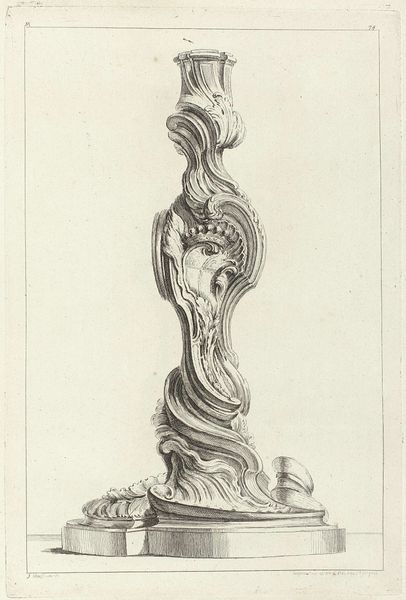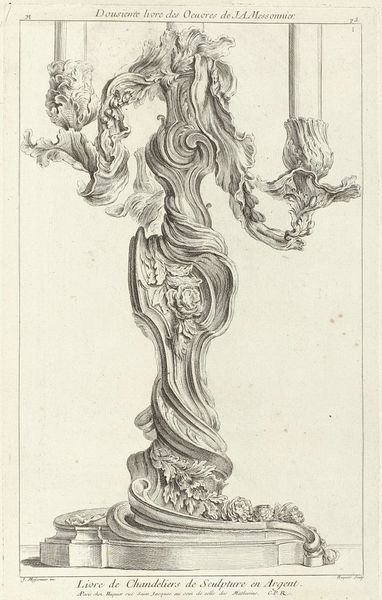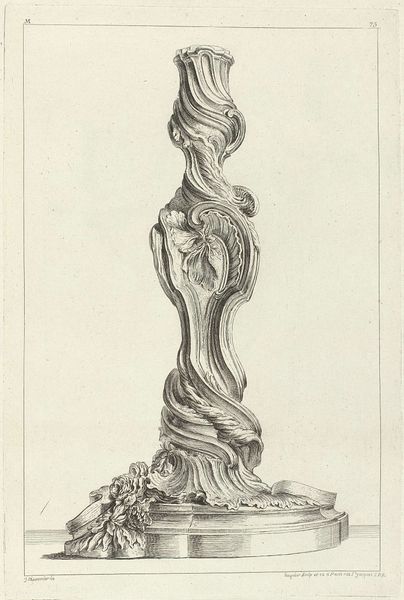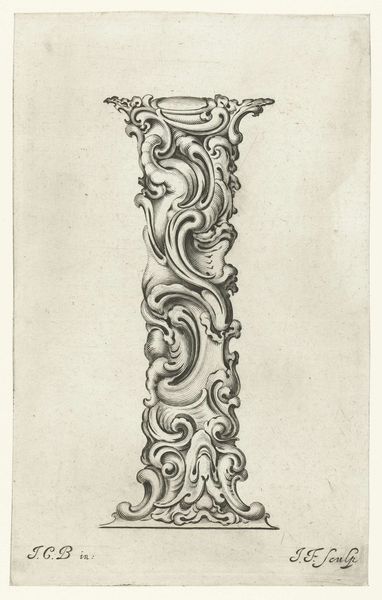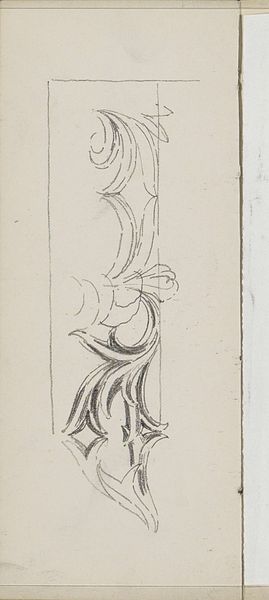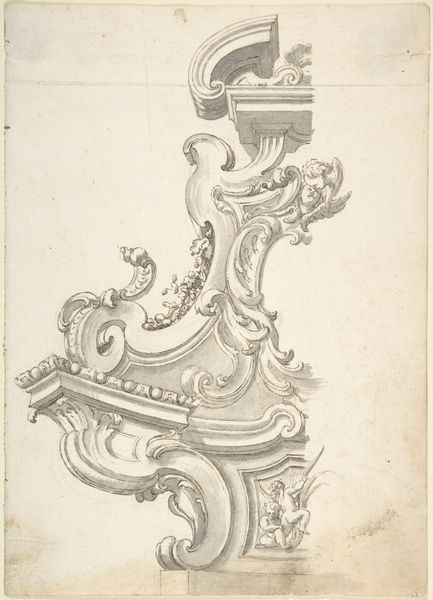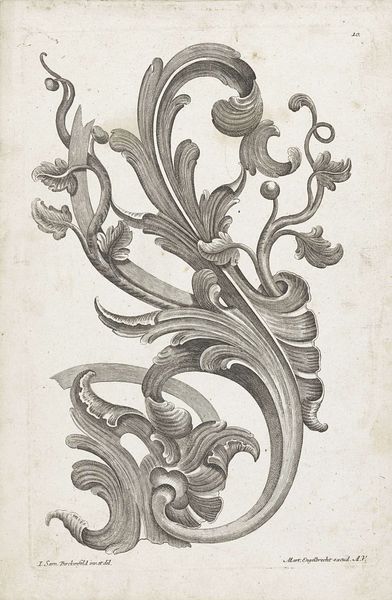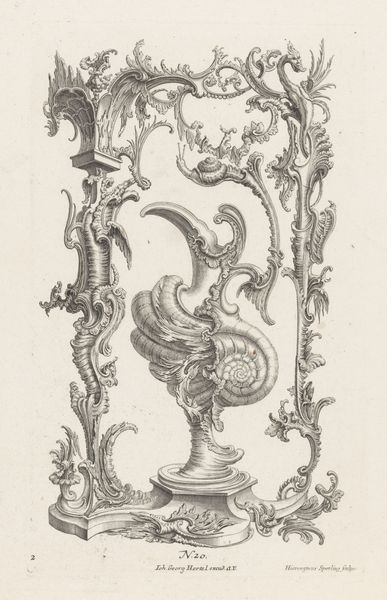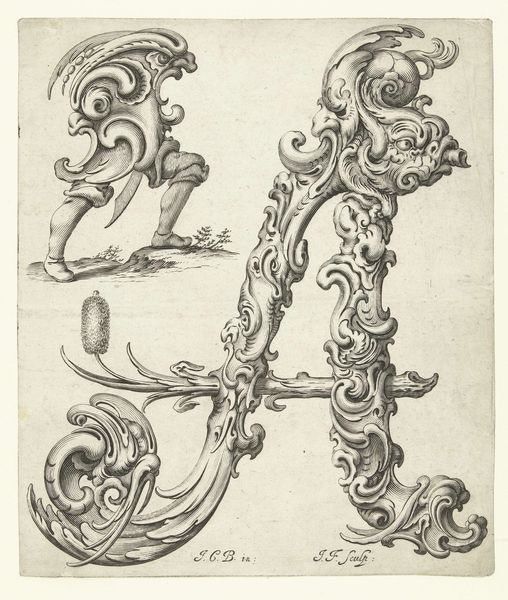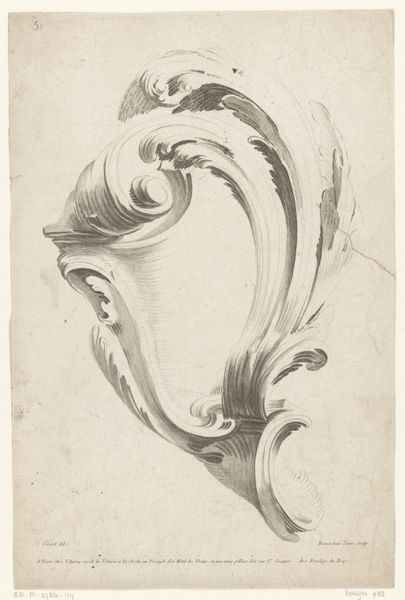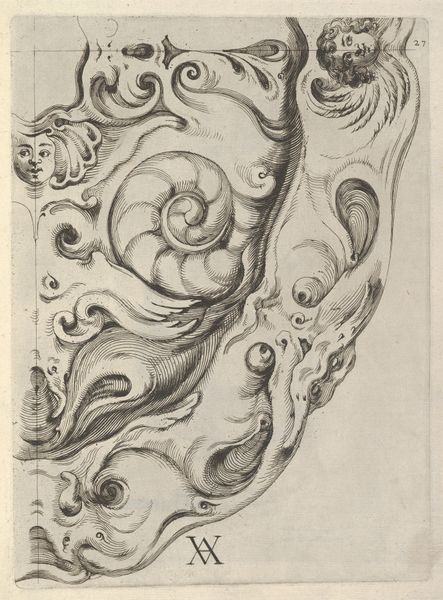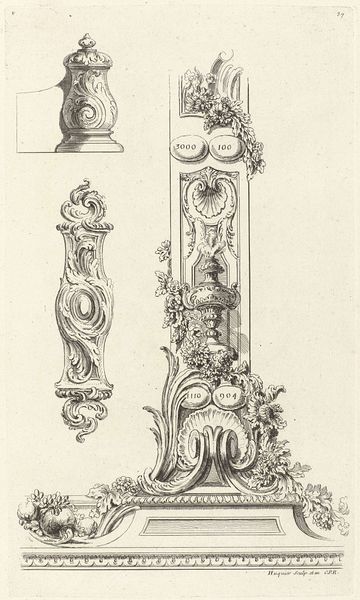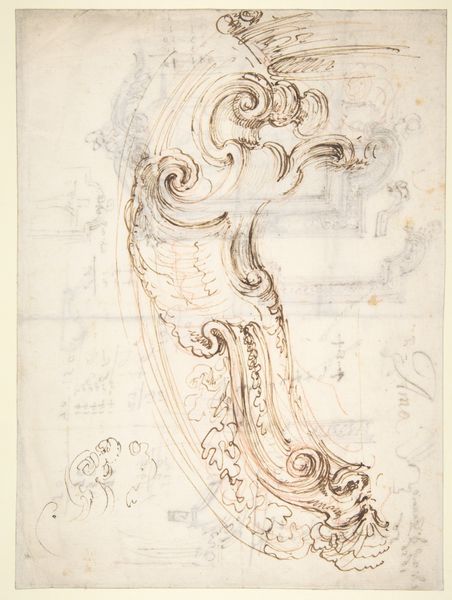
drawing, print, metal, engraving
#
drawing
#
baroque
# print
#
metal
#
form
#
line
#
decorative-art
#
engraving
Dimensions: height 353 mm, width 237 mm
Copyright: Rijks Museum: Open Domain
Curator: Welcome. Here we have Gabriel Huquier’s “Ontwerp voor de voet van een kandelaar,” or "Design for the Foot of a Candlestick" created sometime between 1738 and 1749. The piece, currently residing here at the Rijksmuseum, is an engraving showcasing a Baroque-style candlestick design. Editor: Oh, wow! My first thought is just… it’s so extra! The swirls, the embellishments… it's almost comical. I can imagine it in some grand, dimly lit hall, casting dramatic shadows. Curator: Exactly! The Baroque period loved drama. This wasn't just about function; it was about display. These candlestick designs, circulated as prints, influenced metalworkers across Europe, shaping the aesthetic landscape of the time. Huquier, primarily a printmaker, played a key role in disseminating such designs. Editor: You can practically see the craftsman's hand moving to realize this in metal, it demands attention and skillful execution. I wonder, did people actually make these, or were some too wild even for the 18th century? Curator: Many were realized, though some designs remained aspirational. The engraving allowed artisans to study and adapt the design, often simplifying it for practical reasons, while keeping the spirit of opulence alive. Editor: There’s an almost unsettling dynamism to it, like it’s about to spring to life. All those curves... It almost feels… liquid. That floral embellishment also hints to a certain organic and life like feeling. Curator: The twisting form you perceive is a signature Baroque trait – the "serpentine line." Think about how Bernini's sculptures seemed to defy gravity; this candlestick foot design attempts the same effect on a smaller, more domestic scale. It brings a bit of theatrical flourish into everyday life. Editor: Knowing the designs got simplified somewhat bursts my bubble a little! It’s nice imagining full blown candlelabra throughout some palatial estate though. Still it does have a powerful character doesn't it? Curator: It does. And that power, as realized in objects and disseminated through print, played no small part in shaping European taste. Editor: True, art directs our vision just as much as we direct it, in its own weird way. Thanks for enlightening me about the "extra-ness".
Comments
No comments
Be the first to comment and join the conversation on the ultimate creative platform.
